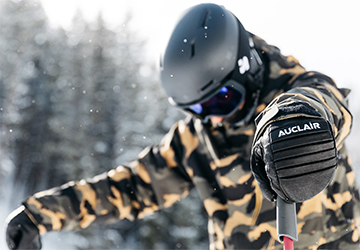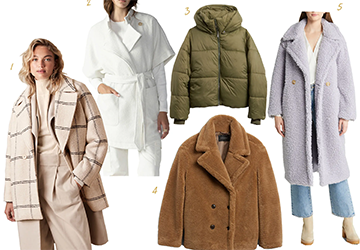4 Tips for Choosing the Perfect Winter Gloves
Author: sana
Winter is coming, and it's time to prepare with suitable gloves to keep your hands warm and protected. Choosing the perfect winter gloves might seem straightforward, but there are a few essential factors to consider.
In this blog post, we'll provide four tips to guide you in finding the ideal gloves for your unique needs this winter. Whether shovelling snow, skiing down slopes, or braving the cold weather, we've got you covered on what to look for.
Read on for crucial aspects when picking out your perfect winter gloves!

4 Tips for Choosing the Perfect Winter Gloves
Now that you know we'll be sharing pointers on selecting ideal winter gloves, let's dive into the four main tips:
1.Fabric is Everything
A glove's fabric dictates the warmth and water protection it provides. Consider how you'll use the gloves when deciding on materials.
Favourites like leather, wool, and fleece strike an ideal balance of insulation, durability and dexterity. For extreme wetness or cold, upgrade to heavy hitters like Gore-Tex. Thinsulate and PrimaLoft are great synthetic fills, too. Are they going touchscreen? Seek conductive leather or silicone grip patches.
Remember – the best gloves for snowballs and sledging differ from those for ice fishing. Choose materials aligning with your winter hobbies.
2.Nail the Fit
An improper glove fit hampers mobility and fails to seal in heat—gauge fit by trying gloves on both bare and with liner gloves underneath.
The ideal size allows your fingers to reach the tips without excess material bunching. Snug gloves should not feel painfully tight or restrictive.
Analyze how you'll layer gloves when selecting a size, especially if wearing glove liners underneath. Adjust the cuffs and straps to customize and lock them in fit.
Finding your perfect "glove fit" takes experimentation but prevents frozen fingers.
3.Cuff Style Matters
Cuffs seal out snow and cold drafts. Long gauntlet cuffs secure underneath or over jackets are best. Stretchy ribbed cuffs move freely. They fit slimmer jackets well.
Gloves with flip-back cuffs easily accommodate bare or covered wrists for maximum flexibility. Evaluate your winter wardrobe and activities first when deciding on cuff styles.
Remember to assess jacket cuffs, too! Dress gloves often have shorter cuffs to accent outfits versus providing weather protection. Think about both fashion and function, given your planned winter gear.

4.Special Features Enhance
Today's winter gloves boast features like wrist cords, touchscreen conductivity and connective clips. Determine which extras would improve your experience. Do you want easy-access finger caps for mobile use? How about clip connectors to keep paired gloves attached when not wearing?
Vital details like gripping pads, sweat-wicking linings and one-hand cinch clips take gloves the extra mile. List your must-have extras and watch for those "nice-to-have" bonuses too!
Conclusion
Finding the perfect winter gloves involves:
· Assessing your intended activities.
· Staying warm.
· Hand covering needs.
Are there any particular features that could be helpful?
Remember these four tips as you shop for gloves to carry you through the coldest days in comfort and safety. We hope our pointers set you up for success in picking ideal gloves to brave the winter weather. Give them a try this season!
FAQs
Q. What temperature rating should I look for in winter gloves?
Ans. For most winter activities, a temperature rating between -20°F and 10°F should suffice to keep your hands warm without overheating. Consider dropping far below zero conditions for frigid climates.
Q. How can I make my gloves touchscreen compatible?
Ans. Many gloves now come designed with conductive leather, silicone grips or fingertip inserts for touchscreen use. You can also apply special touchscreen gloves to pointer fingers. Some gloves have clips to pull back finger tops easily.
Q. Should my winter gloves be waterproof or water-resistant?
Ans. Waterproof gloves utilizing membranes like Gore-Tex provide the highest water protection. Water-resistant models work for light precipitation but saturate over time. Make sure to assess external glove liners if buying waterproof inner gloves.






